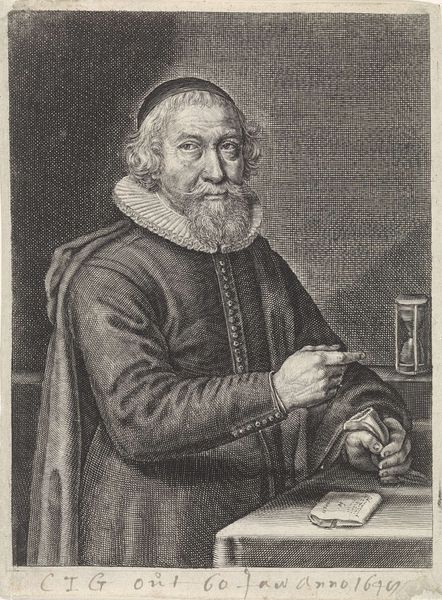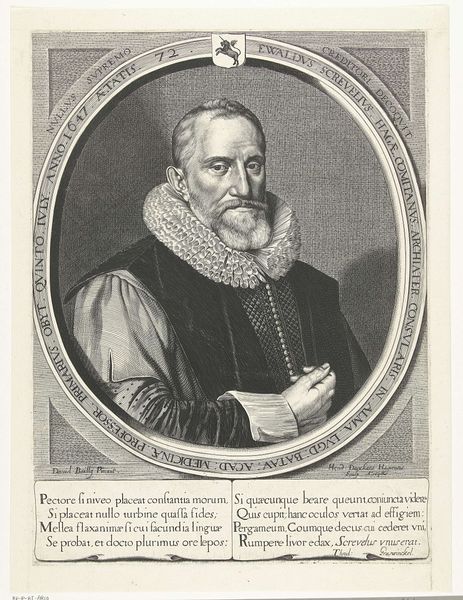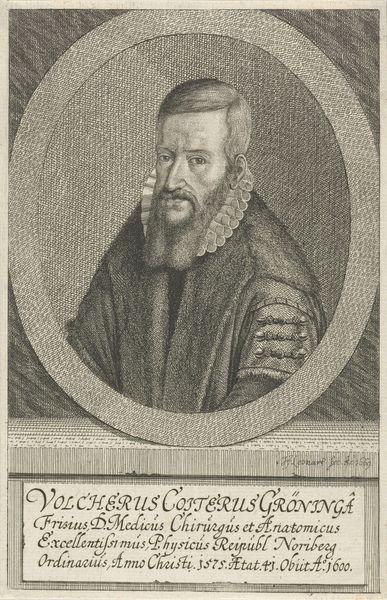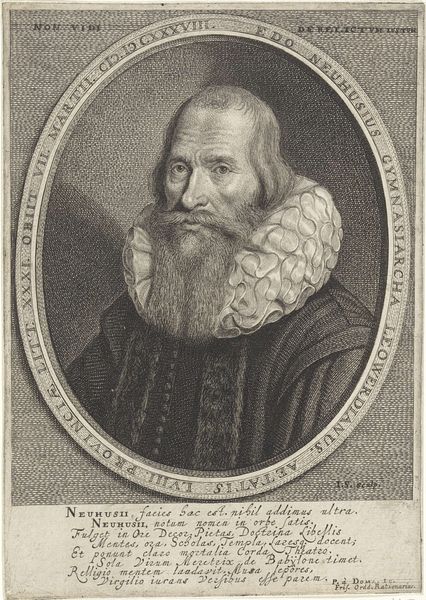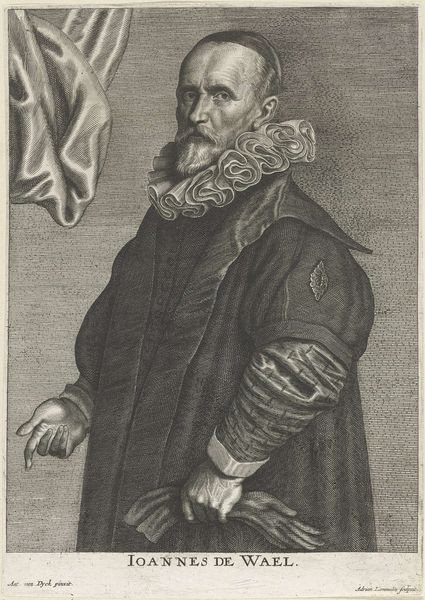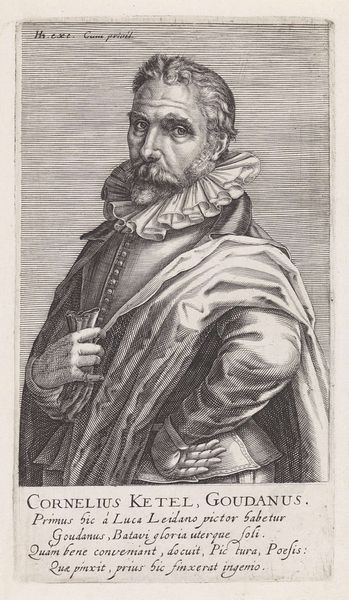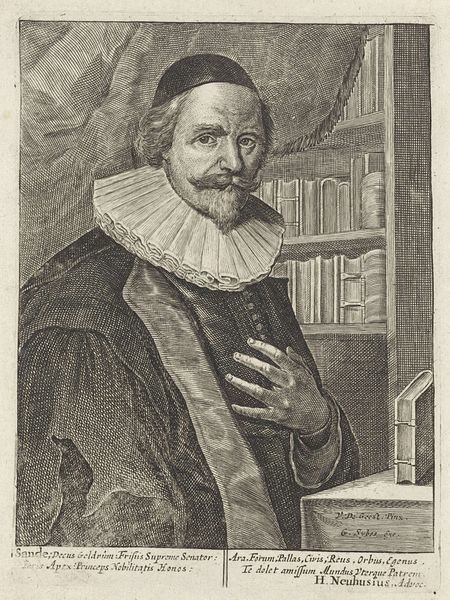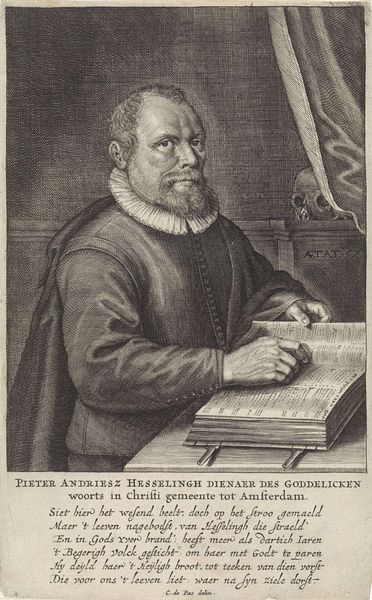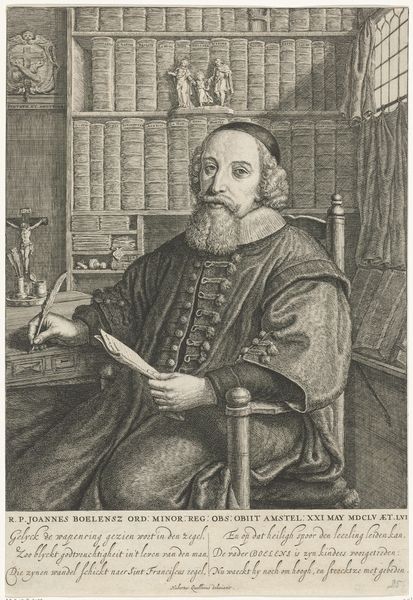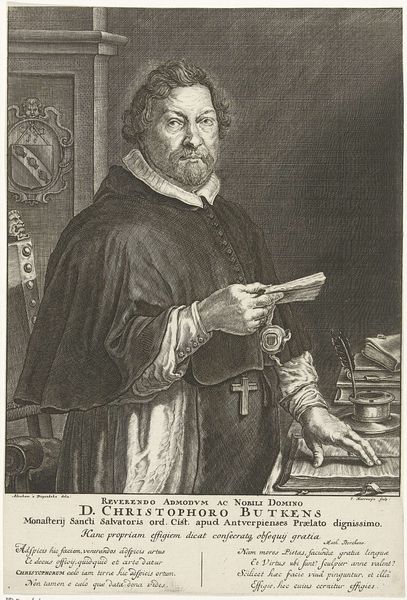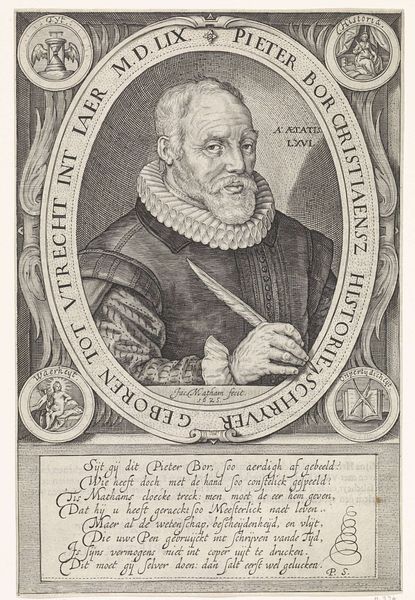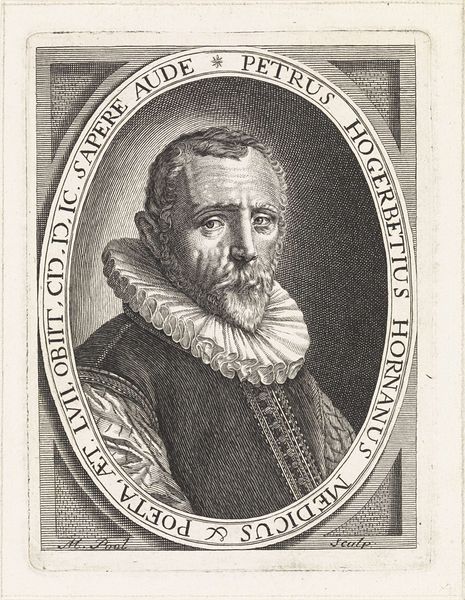
print, engraving
#
portrait
#
baroque
#
dutch-golden-age
# print
#
old engraving style
#
caricature
#
line
#
engraving
Dimensions: height 150 mm, width 98 mm
Copyright: Rijks Museum: Open Domain
Curator: We're looking at a print from the Dutch Golden Age, "Portret van Karel van Mander", created sometime between 1615 and 1680, attributed to Abraham de Cooge. It's an engraving. Editor: It’s incredibly detailed. The way the light and shadow are created using only lines is mesmerizing. I’m struck by how intimate and immediate the subject feels, even though it’s rendered in this old engraving style. Curator: Right. Look closely at the lines themselves, the labor that went into creating this. De Cooge has to meticulously carve each line into the metal plate. It is a reproductive engraving, designed to disseminate Van Mander's image, extending his influence. Note also the inscription below. Editor: True, it is also intriguing that the figure occupies almost the entirety of the frame, really focusing us on Van Mander’s presence and...what's he writing? Curator: Hard to say for sure but the inscription is telling us, "Man seeks much. But one thing is needed." Perhaps it’s a meditation on the writing process, on simplifying complexities to get to the heart of things. Think of the material resources involved—the ink, paper, and the time. Editor: It certainly makes one think about how artistic labour has transformed into the present day with new methods and tools of art-making... But looking back at Van Mander, the face seems to show a blend of seriousness and introspection. And notice the precise details of his attire, it denotes his status and position. Curator: The attire tells us a lot. The ruff, the doublet—these signify wealth and standing. The fact that he's portrayed with writing implements suggests intellect, scholarship, and authority. This piece also plays with ideas around craft and authorship given the added description of who invented it, and who sculpted it. Editor: Absolutely, the composition draws the eye to his hand and the text that follows, underscoring his engagement in this reflective act. A moment frozen for us, carved meticulously, to contemplate art, industry, and society of that period. Curator: It is very beautiful that our encounter with this historical artefact gives pause for reflection about ourselves. Editor: I agree. This piece serves as a reminder of the labour and thought behind every artwork, making us more appreciative of all forms of creative and intellectual output across time and culture.
Comments
No comments
Be the first to comment and join the conversation on the ultimate creative platform.
